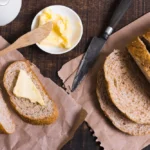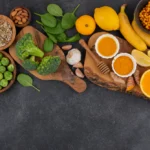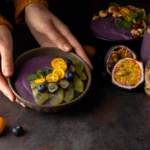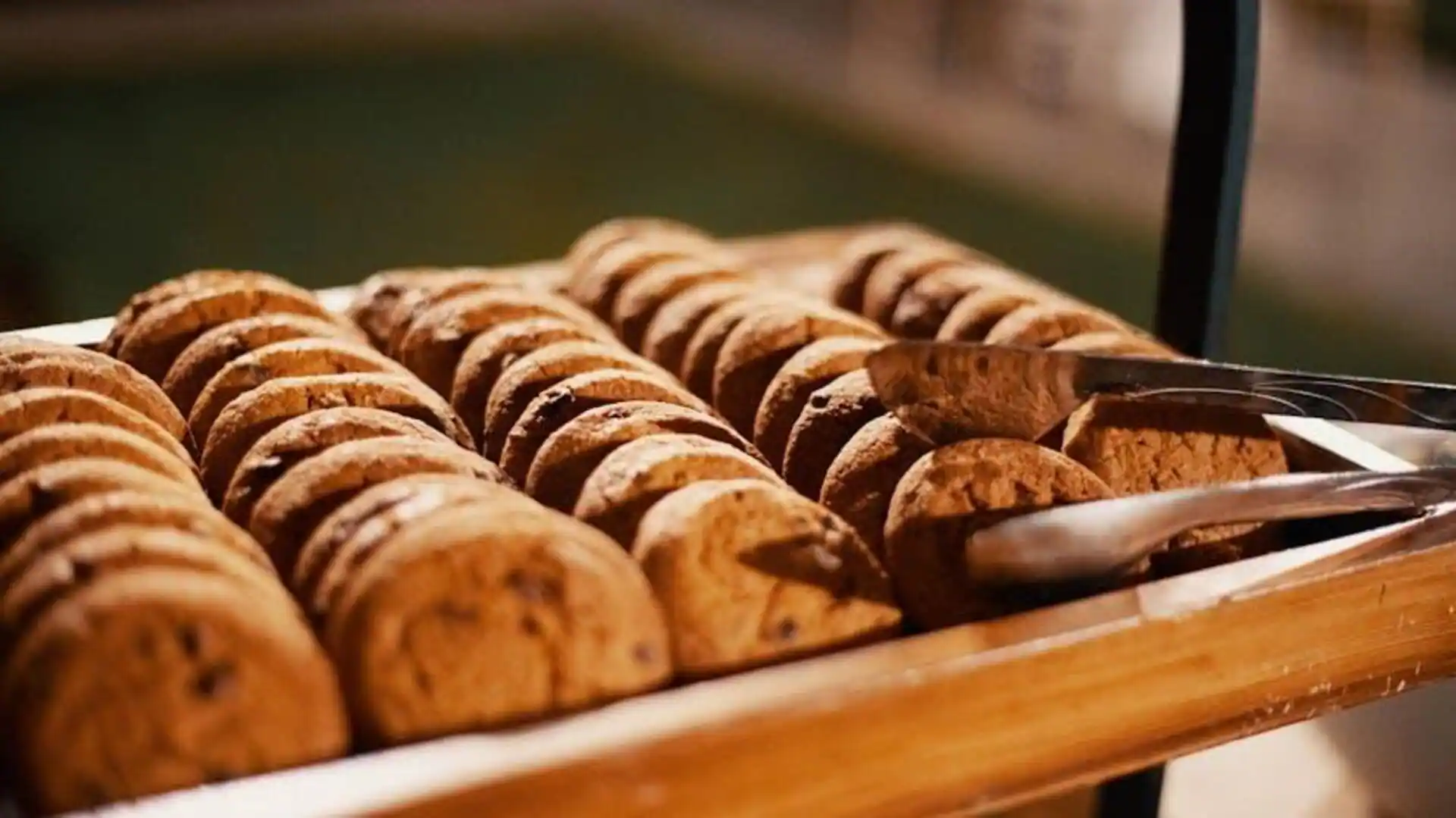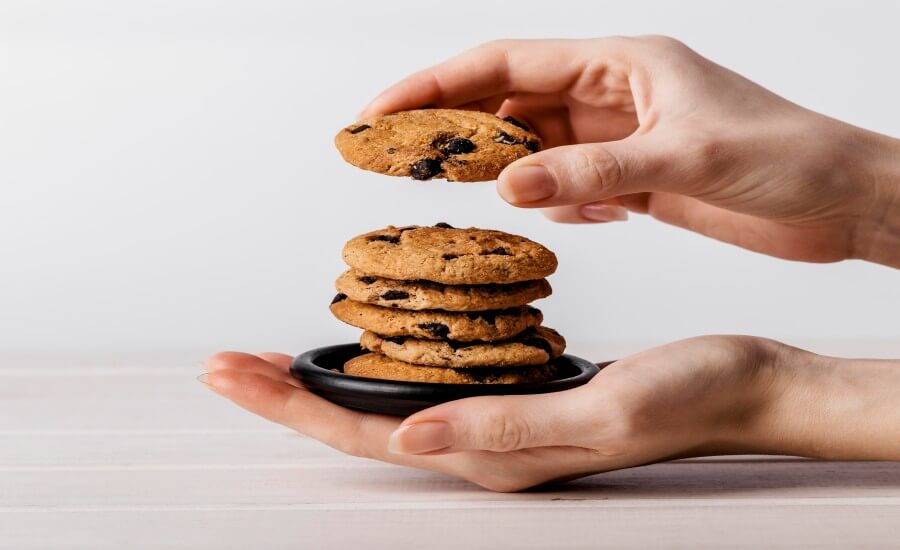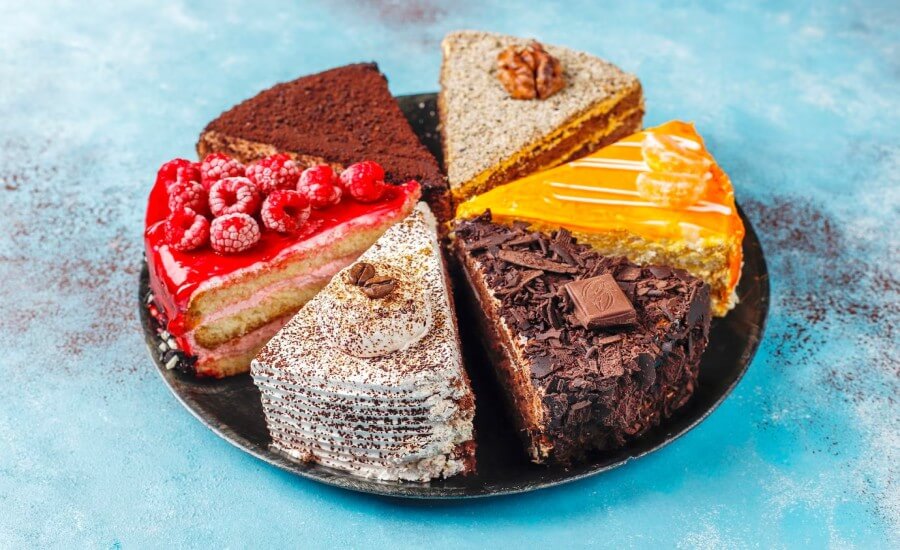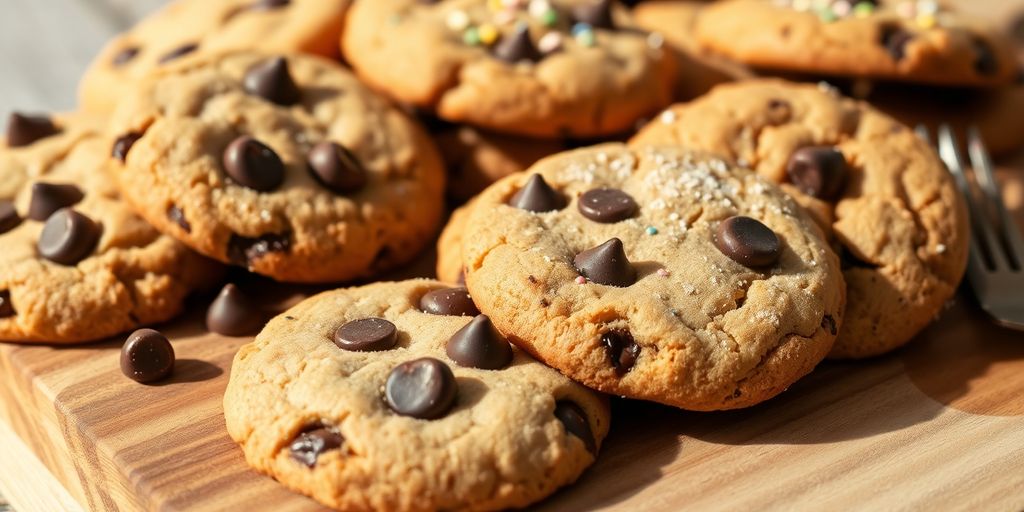Vegan baking is far more than simply omitting animal products; it’s a rewarding lifestyle skill that blends culinary creativity, scientific understanding, and conscious living. This analysis explores Vegan Baking Tips and Tricks from multiple angles: the hands-on techniques of the Home Baker, the chemical principles explained by the Food Scientist, the health considerations from the Nutritionist, the ethical underpinnings noted by the Advocate, and the historical context provided by the Culinary Historian. This 360° guide aims to demystify plant-based baking, empowering aspiring bakers with the knowledge and confidence to create delicious, compassionate treats.
Foundational Flour Power: Building Your Vegan Baking Skills
Embarking on the vegan baking journey begins with understanding the fundamentals. Traditional baking relies heavily on eggs, butter, and dairy milk for structure, texture, moisture, and flavour. Mastering vegan baking involves learning how to replicate these functions using plant-based alternatives. It’s a skill built on practice, understanding ingredient interactions, and embracing a little kitchen experimentation. This guide provides the foundational knowledge across different perspectives to help you build your vegan baking prowess.
LENS 1: The Home Baker’s Bench – Practical Tips & Techniques

This is where the flour meets the bowl. The home baker focuses on the practical ‘how-to’ – mastering substitutions, troubleshooting common issues, and achieving consistently delicious results.
- Key Ingredient Swaps:
- Eggs (Binder, Leavening, Moisture):
- Flax/Chia Egg: 1 tbsp ground flax/chia + 3 tbsp water (let sit 5-10 min). Best for binding in cookies, muffins, cakes.
- Mashed Banana/Applesauce/Pumpkin Puree: Adds moisture and some binding. Use ~1/4 cup per egg. Best for dense cakes, muffins, brownies. Can impart flavour.
- Aquafaba: Liquid from canned chickpeas (3 tbsp per egg white, 2 tbsp per whole egg). Whips like egg whites for meringues, macarons, mousses. Also adds lightness to cakes.
- Silken Tofu: Blended until smooth (~1/4 cup per egg). Adds moisture and richness, good for dense cakes, cheesecakes, quiches.
- Commercial Egg Replacers: Follow package directions. Convenient, often starch-based.
- Butter (Tenderness, Flavour, Leavening – via creaming):
- Vegan Butter Sticks: Best direct substitute for flavour and function, especially in recipes relying on creaming (cakes, cookies) or lamination (pastry).
- Coconut Oil: Solid at room temp, can mimic butter’s shortening effect. Use refined for neutral flavour, unrefined for coconut taste. Can make things crispier.
- Vegetable/Canola/Light Olive Oil: Adds moisture but not leavening via creaming. Good for muffins, quick breads, some cakes. Changes texture slightly (often moister, denser crumb).
- Fruit Purees/Avocado: Can replace some fat for moisture, but significantly alters texture. Best in specific recipes.
- Dairy Milk (Moisture, Richness, Browning):
- Soy, Almond, Oat, Cashew, Rice Milks: Substitute 1:1. Soy is often richest, closest to dairy. Oat is creamy. Almond is lighter. Flavour can vary slightly. Unsweetened, plain varieties are most versatile.
- Eggs (Binder, Leavening, Moisture):
- Troubleshooting Common Issues:
- Dryness: Not enough fat or liquid, over-baking, too much flour. Try adding a bit more plant milk or oil, check oven temp, measure flour correctly (spoon & level).
- Gumminess: Over-mixing (especially with wheat flour), wrong egg replacer. Mix batter just until combined.
- Poor Rise: Expired leavening agents, oven temperature incorrect, over/under-mixing. Check baking powder/soda dates, use an oven thermometer.
- Precision is Key: Baking is chemistry. Measure ingredients accurately, especially flour and leaveners.
- Daily Impact: The vegan baking journey involves trial and error. Celebrate the successes (that perfect cookie!) and learn from the flops (the cake that sank). Each bake builds experience and intuition.
- Voice of Experience (Passionate Home Vegan Baker): “Don’t be afraid to experiment, but start by following trusted vegan recipes precisely. Once you understand why certain swaps work, you can get more creative. My flax eggs are now second nature!”
- Critical Reassessment: While convenient, relying solely on highly processed vegan butters or egg replacers might not align with whole-food goals. Learning to use fruit purees or flax eggs offers versatility.
- Perspective Question: Which vegan baking substitute are you most curious to try next, and what recipe will you use it in?
LENS 2: The Food Scientist’s Lab – Understanding the Chemistry

The food scientist delves into the ‘why’ behind vegan baking tips. Understanding the function of traditional ingredients and how plant-based alternatives replicate those chemical processes is crucial for successful substitution.
- The Role of Eggs: Eggs are multi-taskers:
- Binding: Proteins coagulate (set) when heated, holding ingredients together. Flax/chia gels and starches mimic this.
- Leavening: Whipped eggs/whites incorporate air. Aquafaba’s proteins and saponins create stable foams. Chemical leaveners (baking soda/powder) are essential in vegan baking.
- Moisture & Richness: Yolks provide fat and emulsifiers (lecithin). Plant milks, oils, purees, and tofu contribute moisture and fat. Soy lecithin is a common vegan emulsifier.
- Fat’s Function: Fats tenderize by coating flour proteins, inhibiting excessive gluten development. They add flavour, richness, and contribute to leavening when creamed with sugar (incorporating air). Vegan butters and oils perform these roles differently based on their composition (saturated vs. unsaturated fats, water content).
- Milk’s Contribution: Provides moisture, protein (for structure), sugars (lactose in dairy, added/natural in plant milks for browning via Maillard reaction), and fat. Plant milks vary in protein and fat content, affecting the final product.
- Leavening Logic:
- Baking Soda (Sodium Bicarbonate): Needs an acid (vinegar, lemon juice, molasses, brown sugar) to react and produce CO2 gas for lift.
- Baking Powder: Contains both baking soda and a dry acid; reacts with moisture and heat. Double-acting releases gas twice.
- Gluten Development: Mixing flour with water develops gluten proteins, creating structure. Over-mixing makes baked goods tough. Fat helps control this.
- Scientific Deep Dive: The Magic of Aquafaba Aquafaba (chickpea brine) contains proteins and saponins leached from the chickpeas. When whipped, these proteins denature and form a network trapping air bubbles, similar to egg whites. The saponins help stabilize the foam. This unique composition allows it to create light, airy structures like meringues and macarons, previously thought impossible in vegan baking.
- Voice of Experience (Food Scientist): “Vegan baking isn’t magic; it’s applied chemistry. By understanding the functional properties of ingredients – emulsification, coagulation, aeration, starch gelatinization – you can intelligently choose plant-based alternatives to achieve desired textures and structures.”
- Perspective Question: How does knowing the scientific function of an ingredient (like eggs) change your approach to finding a vegan substitute?
LENS 3: The Nutritionist’s Pantry – Healthier Indulgence?

The nutritionist evaluates vegan baking through the lens of health and dietary balance. While vegan treats can be made healthier, they are often still indulgences.
- Potential Benefits:
- No Cholesterol: Plant-based ingredients are naturally cholesterol-free.
- Lower Saturated Fat: Depending on fat source (oils vs. vegan butter/coconut oil), saturated fat can be lower than traditional recipes.
- Increased Fiber: Using whole grain flours, fruits, nuts, and seeds boosts fiber content.
- Potential for More Nutrients: Incorporating ingredients like avocado, sweet potato, beans, or zucchini adds vitamins and minerals.
- Still Treats: Vegan cookies, cakes, and pastries are typically high in sugar and fat, regardless of origin. Portion control and moderation remain important.
- Ingredient Choices Matter:
- Flour: Whole wheat, spelt, or oat flour offer more nutrients and fiber than refined white flour.
- Sweeteners: While dates, maple syrup, or coconut sugar are less refined than white sugar, they are still sugars and should be used mindfully.
- Fats: Prioritizing whole-food fats like avocado or nut butters over refined oils or processed vegan butters can add nutrients.
- Hidden Benefits: Vegan baking is often naturally dairy-free and can easily be adapted for other allergies (e.g., nut-free using seed butters/oils).
- Voice of Experience (Registered Dietitian Nutritionist): “Vegan baking offers opportunities to incorporate more whole foods, fiber, and beneficial fats into treats. However, a vegan brownie is still a brownie. Enjoy mindfully as part of a balanced diet.”
- Alternative Approaches: Explore oil-free baking (using fruit purees like applesauce for moisture) or focus on fruit-sweetened recipes for lower added sugar options.
- Perspective Question: How can you modify your favourite traditional baking recipe to make a slightly more nutritious vegan version?
LENS 4: The Ethical Advocate’s Oven – Baking with Compassion
For the ethical advocate, vegan baking is a natural extension of a compassionate lifestyle, consciously avoiding ingredients linked to animal exploitation.
- Avoiding Harm: Standard baking ingredients like eggs and dairy are associated with ethical concerns regarding animal welfare in industrial farming (battery cages for hens, dairy cow treatment, separation of calves). Vegan baking eliminates reliance on these systems.
- Conscious Consumerism: Choosing vegan baking ingredients supports plant-based industries and sends a market signal favouring cruelty-free options.
- Beyond Eggs & Dairy: Ethical considerations can extend to sourcing fair-trade sugar and cocoa/chocolate, ensuring workers’ rights are respected and avoiding child labour issues sometimes associated with these commodities.
- Sharing Values: Baking vegan treats for others provides a gentle, positive way to share ethical values through delicious food, fostering connection rather than conflict.
- Voice of Experience (Animal Rights Advocate): “Every time I bake vegan, I know I’m making a choice that aligns with my values. Sharing those delicious results shows others that compassionate living doesn’t mean missing out on life’s pleasures, like a good cookie!”
- Perspective Question: How does aligning your baking choices with your ethical values add meaning to the process for you?
LENS 5: The Culinary Historian’s Perspective – Evolution & Trends
The culinary historian views vegan baking within the broader context of baking history, cultural traditions, and modern food trends.
- Naturally Vegan Roots: Many traditional breads worldwide are inherently vegan (water, flour, salt, yeast). Some historical cake or biscuit recipes, particularly from times of rationing or in poorer communities, used oil or vegetable shortening and minimal or no eggs/dairy out of necessity. Certain cultural traditions feature plant-based sweets (e.g., some Indian ladoos, Middle Eastern date-filled cookies).
- The Modern Vegan Baking Boom: The significant rise in veganism over the past few decades, fueled by ethical, environmental, and health concerns, created demand for vegan versions of classic baked goods.
- Innovation & Key Moments:
- Ingredient Availability: The widespread availability of diverse plant milks, reliable vegan butters, and shortenings was foundational.
- Online Communities & Blogs: Early vegan bloggers shared recipes and troubleshooting tips, building a knowledge base.
- Aquafaba Discovery (circa 2014-2015): Revolutionized vegan meringue, macarons, and lighter cakes.
- Cookbook Influence: Books like “Vegan Cupcakes Take Over the World” (2006) proved vegan baking could be decadent and mainstream.
- Market Transformation Map: Illustrate the timeline showing the increasing availability and variety of vegan baking ingredients in supermarkets – from just soy milk decades ago to multiple milk types, butters, creams, egg replacers, chocolates, and even vegan sprinkles today.
- Current Trends: Gluten-free vegan baking, elaborate custom cakes (as seen on social media), healthier whole-food approaches, artisanal vegan bakeries.
- Voice of Experience (Food Historian): “While intentional vegan baking is relatively recent, plant-based baking itself isn’t new. What’s fascinating is the modern drive to meticulously replicate non-vegan classics using plant ingredients, spurred by innovation and a growing cultural shift.”
- Perspective Question: How do you see modern vegan baking trends connecting with or diverging from traditional baking practices?
PERSPECTIVE INTERSECTION MATRIX
| INTERSECTION | HOME BAKER | FOOD SCIENTIST | NUTRITIONIST | ETHICAL ADVOCATE | CULINARY HISTORIAN |
| Home Baker | – | Needs science for troubleshooting | Applies nutritional swaps | Motivated by ethics | Uses modern ingredients/trends |
| Food Scientist | Explains ‘why’ for baker | – | Analyzes nutrient interactions | Science enables ethical options | Drives ingredient innovation |
| Nutritionist | Guides healthier ingredient choice | Understands ingredient function | – | Health can align with ethics | Notes health trends in baking |
| Ethical Advocate | Motivates baker’s choices | Benefits from viable substitutes | Ethics ≠ health always | – | Sees shift in values/market |
| Culinary Historian | Provides context for baker | Notes innovation timeline | Tracks evolution of ‘healthy’ | Contextualizes ethical shift | – |
Analysis: The Home Baker’s success relies heavily on understanding Food Science and applying Nutritional or Ethical goals. Culinary History provides context and tracks the trends and innovations (spurred by Science and demanded by Ethics/Nutrition/Bakers) that make modern vegan baking possible. Each lens informs and influences the others.
MISCONCEPTION ANALYSIS
| MISCONCEPTION | REALITY |
| Vegan baking requires obscure, expensive ingredients. | Many recipes use common pantry staples (flour, sugar, oil, plant milk, flax seeds). While some specialty items exist, basic vegan baking is accessible. |
| Vegan baked goods are always dense, dry, or crumbly. | Texture issues usually stem from incorrect substitutions, improper measuring, or over-mixing, not inherent flaws in vegan ingredients. Good technique yields good texture. |
| You can’t achieve a good rise without eggs. | Chemical leaveners (baking soda/powder) are the primary drivers of rise in most cakes/muffins. Aquafaba provides lift where whipped eggs are crucial (meringues). |
| Vegan baking tastes noticeably different or “off.” | Well-made vegan baked goods can be indistinguishable from their non-vegan counterparts. The flavour depends on quality ingredients and recipe execution. |
| All vegan baking is healthy baking. | Vegan treats can still be high in sugar, refined flour, and fat. “Vegan” denotes ingredient origin, not automatic healthfulness. |
KEY TURNING POINTS
- Commercialization of Plant Milks (late 20th C onwards): Provided a readily available, fundamental dairy substitute.
- Development of Vegan Margarines/Butters: Offered functional fat replacements crucial for texture.
- The Rise of Vegan Blogs/Online Communities (Early 2000s): Democratized recipe sharing and troubleshooting, rapidly accelerating collective knowledge.
- The “Discovery” and Popularization of Aquafaba (c. 2014-2015): Opened doors to previously difficult vegan preparations like meringue.
- Mainstream Retailer Acceptance: Increased stocking of vegan baking ingredients made them accessible outside specialty stores.
SYNTHESIS & RECOMMENDATIONS: Convergent Reflections – Mastering the Skill
Becoming proficient in vegan baking is a journey that integrates practical skill (Home Baker), scientific knowledge (Food Scientist), nutritional awareness (Nutritionist), ethical intention (Advocate), and an appreciation for its place in culinary history (Historian). It’s about learning the ‘how’ and the ‘why’ of plant-based substitutions to confidently create delicious results.
- Recommendations for Skill Development:
- Start Simple: Begin with basic recipes like cookies or quick breads using straightforward swaps (flax eggs, plant milk, oil/vegan butter).
- Follow Recipes Carefully: Especially initially, stick to trusted vegan recipes before experimenting heavily.
- Master Key Substitutes: Understand when and why to use flax eggs vs. applesauce vs. aquafaba.
- Measure Accurately: Invest in proper measuring cups/spoons and potentially a kitchen scale.
- Observe and Learn: Pay attention to how batters look and how things bake. Troubleshoot thoughtfully.
- Embrace the Process: See baking as a creative outlet and a continuous learning experience.
Vegan baking is an empowering skill that allows you to create delightful treats that align with diverse values – whether health-focused, ethically driven, or simply exploring new culinary territory.
FURTHER AREAS OF EXPLORATION
- Advanced Vegan Pastry Techniques (Lamination, Choux Pastry)
- Gluten-Free Vegan Baking Challenges and Solutions
- Natural Colouring and Flavouring in Vegan Baking
- Vegan Bread Making (including Sourdough)
- Oil-Free and Refined Sugar-Free Vegan Baking
- The Science of Vegan Cheese Making (for cheesecakes etc.)


